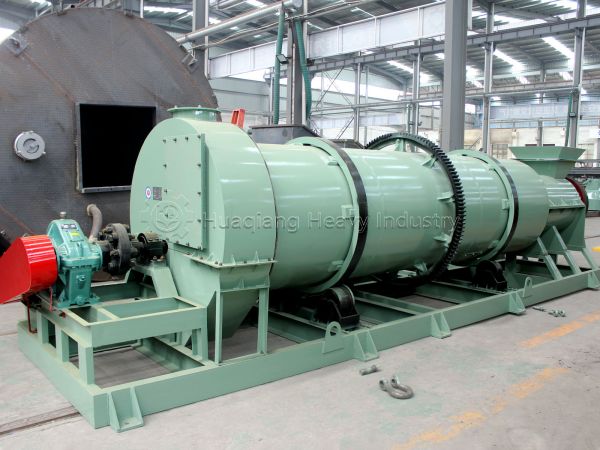In the field of organic fertilizer production, the new type two-in-one organic fertilizer granulator, with its integrated design, breaks through the limitations of traditional equipment. Its operating principle revolves around the integrated "mixing-granulation" process, achieving efficient transitions from raw material processing to granule formation, providing key technical support for large-scale organic fertilizer production.

After the equipment is started, pre-treated organic raw materials (such as livestock and poultry manure and composted straw) first enter the mixing chamber. This process utilizes a double-helix mixing structure, with counter-rotating spiral blades shearing, stirring, and pushing the raw materials. Simultaneously, a precisely controlled water addition system maintains a stable moisture content within the optimal granulation range of 40%-50%. During the mixing process, the spiral blades' gradually varying pitch design prevents raw material agglomeration and ensures uniform incorporation of organic matter and auxiliary materials (such as bentonite), laying the foundation for homogeneous granulation, a prerequisite for ensuring high-quality granules.
When the evenly mixed raw materials are pushed into the granulation chamber of the new type two-in-one organic fertilizer granulator, the equipment's core "two-in-one" function officially begins. The granulation chamber incorporates a dual mechanism of twin-roller extrusion and disc polishing. First, a pair of extrusion rollers with curved grooves on their surfaces apply high-pressure rolling to the raw material, compacting the loose material into a flake intermediate of uniform thickness. The rolling pressure can be dynamically adjusted based on the raw material characteristics (typically 15-25 MPa) to ensure the flakes have sufficient density and are resistant to breakage. The flake intermediate then enters the rotating disc below, which rotates at 30-50 rpm. Through the combined effects of centrifugal force and friction, the flakes are continuously collided and ground within the disc, gradually forming spherical granules with a uniform particle size (typically 2-6 mm).
Throughout the entire workflow of the new type two-in-one organic fertilizer granulator, the equipment's temperature control system and discharge mechanism work in sync: the temperature control system maintains the granulation chamber temperature at 50-60°C through interlayer heat-conducting oil, accelerating the evaporation of water from the raw materials while preventing high temperatures from damaging the activity of organic matter; the discharge mechanism automatically adjusts the discharge speed based on the degree of granulation formation, ensuring that qualified granules are discharged promptly and that substandard granules re-enter the granulation chamber through a reflux channel for secondary processing. This continuous operating principle of "mixing-extrusion-rounding-screening" significantly shortens the production process, increasing efficiency by over 30% compared to traditional split-type equipment while reducing raw material loss, helping to advance organic fertilizer production line towards high efficiency, energy conservation, and high quality.